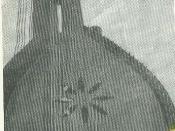Bandura and Social Learning Theory
"Do as I say, not as I do." The quote is one of the most famous adages of all time. After all, mom is always right. Then how is it that many professionals disagree with such a classic phrase? Scientific evidence. Through years of research, world-renowned psychologist Albert Bandura created an entirely new field of psychology based on a fairly simple idea: humans learn by observation.
Born on December 4, 1925, in the small town of Mundare in northern Alberta, Canada, Bandura was educated in a small elementary school and high school in one, with minimal resources, yet a remarkable success rate. He received his bachelors degree in Psychology from the University of British Columbia in 1949. He went on to the University of Iowa, where he received his Ph. D. in 1952. It was there that he came under the influence of the behaviorist tradition and learning theory.
While at Iowa, he met Virginia Varns, an instructor in the nursing school. They married and later had two daughters. After graduating, he took a postdoctoral position at the Wichita Guidance Center in Wichita, Kansas. In 1953, he started teaching at Stanford University. By 1973, Bandura was president of the American Psychological Association, and received the APA's Award for Distinguished Scientific Contributions in 1980. This is a great honor, of course, but his greatest contribution to society is the Social Learning Theory (but he has recently renamed it "Social Cognitive Theory") on which he also published a book in 1941 entitled "Social Learning Theory." These books and articles are the most relevant psychological research in determining aggression and deviance (Isom, 1998). He began to look at personality as an interaction among three "things:" the environment, behavior, and the person's psychological processes.
Of the hundreds...


